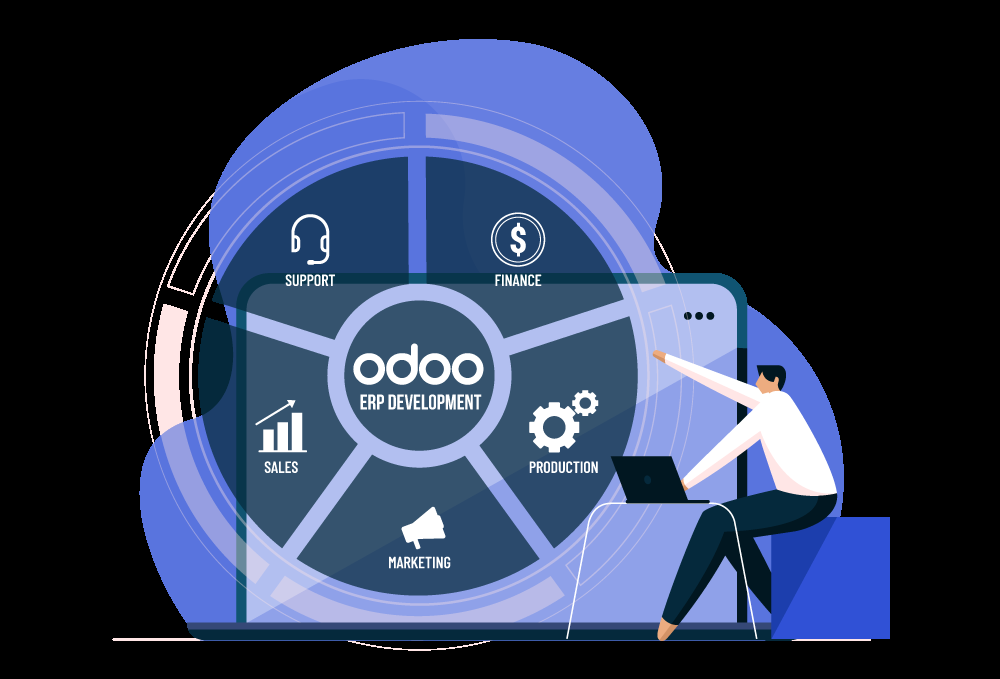In the fast-paced world of modern business, efficiency and adaptability are crucial for staying ahead. Odoo, an open-source ERP (Enterprise Resource Planning) software, offers a comprehensive suite of applications designed to streamline various business processes. From managing finances and human resources to handling sales and inventory, Odoo’s modular approach allows businesses to tailor the system to their specific needs. However, effective implementation of Odoo requires careful planning and strategic execution. In this article, we’ll explore key strategies to ensure a successful Odoo implementation and how they can help streamline your business operations.
1. Define Clear Objectives
Before diving into the implementation process, it’s essential to establish clear objectives for what you hope to achieve with Odoo. These objectives should align with your business goals and address specific pain points or inefficiencies within your organization. Whether it’s improving financial reporting, enhancing customer relationship management, or automating inventory processes, having a well-defined purpose will guide your implementation strategy and help measure success.
Action Steps:
- Conduct a thorough needs assessment to identify the specific requirements of your business.
- Set measurable goals for each area you plan to address with Odoo.
- Communicate these goals clearly with your implementation team and stakeholders.
2. Choose the Right Modules
One of Odoo’s strengths is its modular structure, allowing businesses to select and integrate only the applications they need. While it’s tempting to implement every available module, it’s more practical to focus on the modules that align with your defined objectives and business needs.
Action Steps:
- Review the full list of Odoo modules and features.
- Prioritize modules based on their impact on your business processes.
- Consider starting with core modules such as Sales, Accounting, and Inventory before expanding to additional functionalities.
3. Involve Key Stakeholders
Successful Odoo implementation involves more than just technical deployment; it requires buy-in and involvement from key stakeholders across your organization. Engaging with end-users and department heads early in the process ensures that the system meets their needs and that they are invested in its success.
Action Steps:
- Identify and involve key stakeholders from various departments.
- Gather feedback on their requirements and pain points.
- Foster open communication channels throughout the implementation process.
4. Plan for Data Migration
Data migration is a critical component of Odoo implementation. Accurate and seamless transfer of existing data into the new system is essential to avoid disruptions and ensure continuity. This process involves cleaning, mapping, and importing data from legacy systems.
Action Steps:
- Audit and clean your existing data to ensure accuracy and completeness.
- Develop a detailed data migration plan, including data mapping and validation steps.
- Conduct thorough testing to ensure data integrity post-migration.
5. Customize and Integrate
Odoo’s flexibility allows for customization to fit your business processes. Whether you need custom workflows, specific reports, or unique user interfaces, customization can help tailor the system to your needs. Additionally, integrating Odoo with other tools or systems used in your organization can enhance overall efficiency.
Action Steps:
- Work with Odoo developers or consultants to customize the system according to your requirements.
- Identify any external tools or systems that need to be integrated with Odoo.
- Test all customizations and integrations to ensure seamless operation.
6. Train Your Team
Effective use of Odoo depends on how well your team understands and utilizes the system. Comprehensive training for all users ensures that they can navigate the system confidently and leverage its features to their fullest potential.
Action Steps:
- Develop a training program tailored to different user roles and needs.
- Provide hands-on training sessions and create user guides.
- Offer ongoing support and resources to address any questions or issues.
7. Monitor and Optimize
Post-implementation, continuous monitoring and optimization are essential to ensure that Odoo is delivering the expected benefits. Regularly review system performance, user feedback, and process efficiencies to identify areas for improvement.
Action Steps:
- Establish key performance indicators (KPIs) to measure the success of the implementation.
- Schedule regular reviews and updates to address any issues or adapt to changing business needs.
- Solicit feedback from users to identify and resolve any operational challenges.
8. Ensure Ongoing Support
Odoo is a dynamic system with regular updates and new features. Ensuring ongoing support and maintenance helps you stay up-to-date with the latest developments and address any technical issues that arise.
Action Steps:
- Engage with Odoo support services or a trusted consultant for ongoing assistance.
- Keep up with software updates and new releases.
- Plan for periodic system audits and upgrades to maintain optimal performance.
Conclusion
Implementing Odoo effectively can significantly streamline your business processes, enhance productivity, and improve overall efficiency. By defining clear objectives, choosing the right modules, involving stakeholders, planning for data migration, customizing and integrating, training your team, and ensuring ongoing support, you can set your organization up for success with Odoo. As you navigate the implementation journey, remember that careful planning and strategic execution are key to unlocking the full potential of this powerful ERP system.



More Stories
Washing Machine Maintenance in Riyadh
Best LG Washing Machines Repair in Jeddah
Exploring the Role of Medical AI Chatbots in Enhancing Patient Feedback Systems